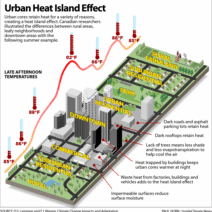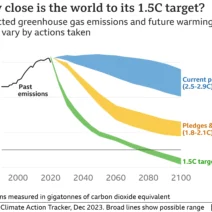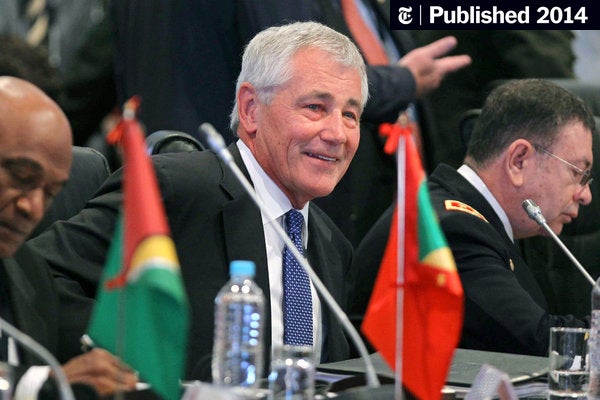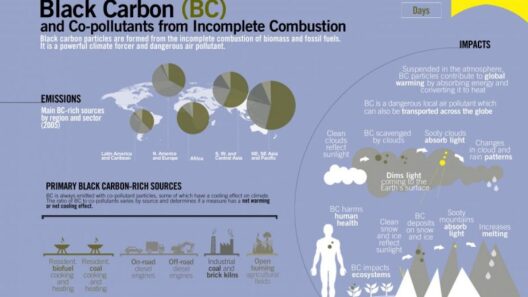In the grand theatre of international relations, where countries often dance a precarious waltz of diplomacy, the acknowledgment of climate change emerges as an unexpected protagonist. The Pentagon, an institution synonymous with military prowess, increasingly finds itself at the intersection of national security and environmental stewardship. The question of whether the Pentagon recognizes man-made global warming is not merely a matter of political rhetoric; it is a deeply consequential inquiry entwined with the fate of nations.
For decades, scientific consensus has firmly established that human activities—predominantly the burning of fossil fuels—expel vast quantities of greenhouse gases into the atmosphere. These gases trap heat, leading to a cascade of climatic upheavals. The Pentagon, historically fixated on threats of a more traditional kind, is now sounding alarms about climate change as a formidable adversary lurking in the shadows. This newfound acknowledgment signals a paradigm shift where the military institution grapples with the implications of climate dynamics.
One of the most striking aspects of the Pentagon’s recognition of climate change is its framing of the issue through the lens of security. The juxtaposition of environmental and military concerns creates a vivid metaphor—the climate crisis as a stealthy insurgent infiltrating national borders. Much like a covert operation, the effects of climate change often manifest gradually, yet they possess the potential to wreak havoc on geopolitical stability. Restlessness among communities displaced by rising sea levels or droughts can fuel conflict, creating a perfect storm of desperation and violence.
The Department of Defense has elucidated its stance on climate change through various reports, notably in the 2014 Climate Change Adaptation Roadmap, followed by subsequent iterations. These documents do not mince words. They highlight the direct impacts of climate change on military readiness, infrastructure, and global security dynamics. The Pentagon posits that climate-related incidents, such as extreme weather events, can disrupt operations and complicate responses to crises, thereby eroding the military’s capacity to safeguard national interests.
Consider the military bases situated in vulnerable areas. As oceans rise and storms strengthen, installations from Norfolk, Virginia, to Camp Lejeune in North Carolina stand at a precipice. A metaphor emerges: these bases are the sentinels of American might, yet their foundations may be washed away by a tide of climate upheaval. The financial implications are staggering, as the Department of Defense must allocate resources not just for combat readiness, but for fortifying these vital installations against environmental threats.
Moreover, the Pentagon’s acknowledgment of climate change is a harbinger of a broader shift within the military. This institution, traditionally seen as an embodiment of power and control, now embraces an ethos of resilience and adaptation. In crafting strategies that account for climate change, the military is compelled to collaborate with civilian agencies and international partners. The metaphor of a symphony rings true: for the military to successfully orchestrate a response to climate change, it must harmonize its efforts with a diverse array of stakeholders—from scientific communities to humanitarian organizations.
Climate change does not discriminate; its impact reverberates across global socio-economic strata, and in many instances, it exacerbates existing inequalities. The Pentagon recognizes this inconvenient truth and articulates an urgent need for climate-driven strategies that enhance stability. In this sense, the military’s approach transforms into a proactive doctrine, aimed not only at preparing for crises but also at averting them. It reframes the role of security, from mere reactive measures to a broader commitment to global welfare.
Critical to this discourse is the concept of resilience. The military’s strategic pivot towards climate change necessitates cultivating resilient communities. This notion transcends the boundaries of national security, filtering into sustainable development practices, infrastructure enhancements, and disaster preparedness. Through this lens, the metaphor of a fortress becomes applicable: the goal is not merely to defend against threats, but to build stronghold communities capable of withstanding environmental adversities.
The significance of the Pentagon acknowledging man-made global warming cannot be overstated; it catalyzes a larger dialogue about accountability. The military itself is a significant consumer of energy and contributor to emissions, and the admission of climate change’s potential impact on security obliges the institution to lead by example. Sustainable practices within the military, from energy efficiency initiatives to a transition towards renewable sources, can serve as a microcosm of the larger societal shift needed in addressing the climate crisis.
In conclusion, the Pentagon’s acknowledgment of man-made climate change serves as a clarion call—an urgent reminder that the consequences of our actions extend far beyond our immediate surroundings. As we evaluate the intertwining trajectories of climate change and national security, it becomes increasingly evident that the way forward demands cooperation, innovation, and a collective will. The theater of climate change is replete with actors, each with the potential to influence the narrative. In this evolving storyline, the Pentagon has positioned itself not just as a guardian of national security but as a player that recognizes the imperative of safeguarding our global environment. Only through such recognition can we hope to navigate the tumultuous waters ahead, striking a balance between defense and ecological integrity.






